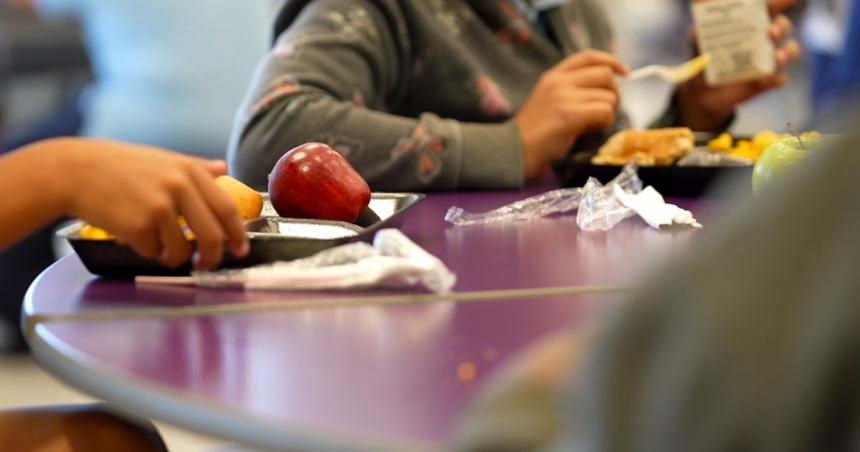Single mother Rebecca Wood, 45, was already grappling with high medical bills in 2020 when she discovered she was being charged a $2.49 “program fee” every time she loaded money onto her daughter’s school lunch account.
With more schools transitioning to cashless payment systems, many districts have partnered with processing companies that impose fees ranging from $3.25 to 4% to 5% per transaction, as per a recent report from the Consumer Financial Protection Bureau. The report revealed that although schools are required by law to provide a fee-free option for paying by cash or check, this is often not communicated transparently.
“It wouldn’t have been an issue if I had a large sum of money to deposit into her account at the start of the year,” Wood explained. “However, since I was paying as I went, I incurred a fee each time. The $2.50 transaction fee equated to the cost of a lunch. So, even though I paid for six lunches, I only received five.”
The U.S. Department of Agriculture, responsible for overseeing the federal policy on fee-free school lunch, has mandated that districts inform families of their payment options since 2017. Nevertheless, even when parents are aware, being required to pay by cash or check to avoid fees can be burdensome.
“It’s incredibly inconvenient,” shared Joanna Roa, 43, who is employed as a library specialist at Clemson University in South Carolina and has two school-going children.
RELATED STORY | Lawmaker proposes banning some food dyes from California school meals
Roa recalled that when her son was in first grade, and she saw the $3.25-per-transaction fee for lunch account transactions, she and her husband opted to pack lunches for him instead.
“I expected some costs here and there,” she remarked. “But $3.25 per transaction, particularly in rural South Carolina where the cost of living is lower — as are salaries — is significant.”
Roa mentioned that preparing lunch for two kids daily for two working parents presented an increased time and effort burden. Her school district has been offering free lunches in school for the past two years, thanks to surplus funds, altering the dynamics. However, Roa noted that this could change at any moment.
In its analysis of the 300 largest public school districts in the U.S., the CFPB discovered that 87% of the districts sampled engage payment processors.
Within these districts, the companies levy an average fee of $2.37 or 4.4% of the total transaction each time money is added to a child’s account. For families with lower incomes who cannot afford to deposit large sums at once, these fees could accumulate weekly or even more frequently, disproportionately inflating costs. Families eligible for free or reduced lunch end up paying up to 60 cents per dollar in fees when paying for school lunches electronically, according to the report.
In Wood’s situation, she researched the fees and learned about the USDA’s mandate to offer fee-free payment by cash or check. Upon highlighting this to the superintendent of her daughter’s Massachusetts school district, she was informed that the lack of transparency was an oversight. To protest, Wood had planned to pay for her daughter’s lunches in coins at the school office, along with other parents. However, the pandemic intervened, altering, among other things, school lunch policy.
In the subsequent years, Wood became involved in a movement that successfully advocated for universal free school lunches in the state, yet she continues to oppose school processing fees for families.
“Even if the lunch itself is complimentary, fees are still charged for purchasing items a la carte, an extra lunch, or any additional transaction,” Wood stated. “These fees disproportionately affect those who are most in need.”
RELATED STORY | Fewer states to have universal free school lunches in 2024-25
Payment companies argue that school districts have the opportunity to negotiate fees and rates when establishing contracts. Nonetheless, the CFPB discovered that intricate company structures “might shield companies from competition and make school districts less inclined to negotiate.” The report indicated that just three companies — MySchoolBucks, SchoolCafe, and LINQ Connect — dominate the market.
Lacking the freedom to select which company to engage with, “families have limited avenues to avoid detrimental practices,” the agency contended, “including those that may breach federal consumer protection regulations.”
The companies referenced in the report did not respond to requests for comment.
If you are a parent facing these fees, know that you have the right to choose to pay by cash or check, per federal policy. You can also urge your school district to negotiate down the fees with their payment processing company or request that the district directly cover the fees, which could provide them with leverage in negotiating a contract.
If your school is situated in a low-income region, you might verify whether your district qualifies for the Community Eligibility Provision, enabling the school to furnish free breakfast and lunch to all enrolled students. More details on the CEP can be accessed on the U.S. Department of Agriculture’s website.





